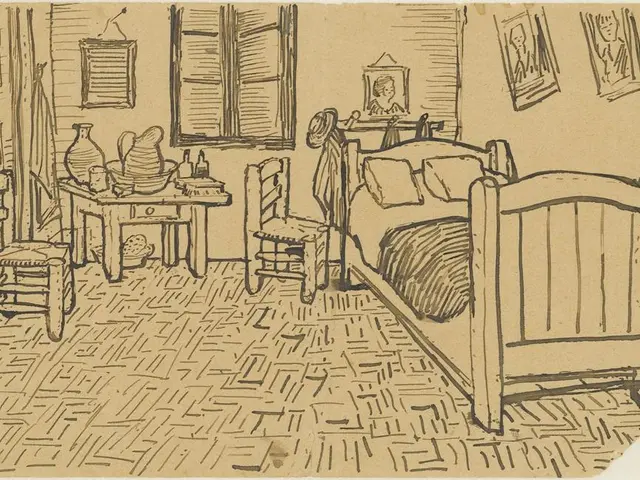Narrative development in museum design via interactive methods
In today's fast-paced world, where everything is at our fingertips and demands immediate engagement, museums have stepped up their game, turning into reimagined playgrounds for the mind. They've shed their old, passive vibe and transformed into immersive storytelling experiences, compelling visitors to not just observe, but to touch, listen, and sometimes even become part of the story they're exploring.
This transformation has seen the birth of a new art form—narrative art, captivating visitors as they delve into the heart of history and art. The journey through the exhibits is no longer a monotonous walk; it's a fluid, engaging adventure, expertly designed to resonate long after we've left the museum.
Weaving a Pulsating Narrative Tapestry
Imagine strolling through a museum that doesn't feel divided by exhibits, but instead, guides you effortlessly from one moment to the next, like a river flowing through a landscape. This smooth, seamless progression is the very essence of the narrative in museum design. Architects and designers are meticulously mapping out paths that lead our minds through stories that tug at our heartstrings days, even years later.
Take, for instance, the National Museum of African American History and Culture in Washington, D.C. Its thoughtful architecture takes visitors on a descent into the depths of history—a winding, emotional journey that begins with the harsh realities of slavery, moves through layers of struggle and resilience, and culminates in exhibit halls celebrating African American culture, music, and art. This isn't merely a physical journey through history; it's an emotional, impactful story that leaves a lasting imprint on our hearts and minds.
Narrative Comes Alive with Interactive Spaces
The days of gazing at objects behind glass cases and reading labels are long gone. Modern museums are using interactive spaces to transform us from passive observers to active participants. Interactive installations, touch screens, virtual reality (VR), and augmented reality (AR) allow us to experience history, art, and science as if we were stepping right into the story itself. Instead of merely reading about an artifact, we might now reach out and virtually handle it, examining it up close or rotating it in 3D for a closer inspection.
At the Museum of Pop Culture in Seattle, visitors are invited to play interactive theremins, remix songs, design their own album covers, and even experiment with various instruments in mini-studios. Instead of simply viewing exhibits, they're actively participating in the creative process. These hands-on experiences foster a sense of connection with the narrative, allowing us to become an integral part of the story being told.
Engaging the Senses to Stamp Long-Lasting Memories
To leave a lasting impression, we need to tap into more than just our minds; we need to stir emotions. And that's why today's museums are using sensory elements like lighting, soundscapes, and scent to add rich layers of meaning and atmosphere to their exhibits. These details might seem subtle, but they're powerful in evoking our emotions and deepening the impact of the story.
Consider, for a moment, the Anne Frank House in Amsterdam. The strategic use of ambient sounds and natural lighting transports visitors into Anne's world, creating a vivid and eerie atmosphere that dramatically elevates the weight of her story. The overwhelming sense of reality feels strikingly palpable, making it hard to believe that history is, in fact, being brought to life.
The Magic of Play to Awakens the Imagination
In museum design, play is one of the most powerful tools for storytelling. Contrary to popular belief, play is not limited to children; it's an invitation for visitors of all ages to explore, imagine, and engage with exhibits in a way that feels spontaneous, delightful, and, above all, fun. By weaving play into narrative, museums tempt us to participate actively, helping us learn through practical and imaginative experiences. The Children's Museum of Lecce is a shining example. Through playful design, it makes art, science, and culture accessible and engaging for children, transforming every corner of the museum into a whimsical wonderland.
Around the world, other museums are experimenting with interactive, playful design to captivate visitors of all ages. In science and natural history museums, visitors might find themselves handling replicas of artifacts, building models, or exploring interactive displays that explain complex ideas in simple, playful ways. By combining play with narrative, museums nurture an environment where learning feels organic and memorable.
Dividing the Story into Colorful Chapters
Large museums often house diverse exhibits under a single theme, making cohesion essential for a smooth narrative flow. Many institutions are now organizing exhibits into thematic sections or "zones," each focusing on a specific aspect of the overall story. These zones function as chapters of a book, allowing visitors to explore the theme from various perspectives.
For example, the Museum of Modern Art in New York City carefully organizes its collections by artistic movement. This way, visitors can journey through the history of modern art chronologically, experiencing how modern art has evolved, influenced by culture, politics, and philosophy. Each section is designed to stand independently yet ties into the broader narrative, providing depth to the narrative arc of each piece displayed.
Giving Visitors the Power to Shape Their Own Stories
Modern museum design embraces personalization, empowering visitors to choose their own journey through exhibits. With digital orientation, self-guided audio tours, and interactive maps, visitors can weave their way through the museum, building their own narrative based on their interests. This personalized approach encourages us to engage with the museum on our terms, fostering a deeper connection with the story.
The Louvre, for instance, offers a mobile app that allows visitors to curate their own paths, focusing on the exhibits that resonate most with them. This personalized learning experience not only caters to our unique tastes but also strengthens our emotional bond with the history unfolding before our eyes.
Temporary Exhibits and Flexible Spaces
Museums are also experimenting with temporary exhibits and flexible spaces to keep the narrative fresh and exciting. These areas can be transformed to display different themes, creating new stories and drawing in new visitors. For example, the Victoria and Albert Museum in London often transforms its exhibition spaces for pop-up shows, such as fashion retrospectives, modern art installations, or exhibits dedicated to digital innovation. These ephemeral narratives encourage repeat visits and give regulars a reason to return for new experiences and stories.
Interactive Design: The Future of Art
The future of museum design lies in creating engaging, immersive, and interactive experiences that spark curiosity and stir emotions. Museums are embracing technologies like AI, digital media, and animation, merging the physical and virtual worlds to create new dimensions of storytelling. As museums continue to push boundaries, the line between storyteller and storylistener will blur, allowing us to co-create our unique museum experiences.
In this new age, museums play far more than just curators of history; they're animators of emotions, educators of the heart as much as the mind. By fusing flow, sensory design, interactivity, and digital storytelling, museums not only preserve the past; they bring it to life, allowing us to become a part of the story. So, the next time you set foot in a museum, remember: you're no longer just observing the story; you're living it. And that's the essence of modern museum design—a new, interactive, and immersive form of storytelling, designed just for you.
Enrichment Data:- Modern museums are leveraging cutting-edge technologies and engaging elements to create immersive experiences. Some interactive design elements include AI integration, immersive art exhibits through projection mapping and VR, interactive installations, touchscreens, animation, and hand-on activities.
- Museums use captivating storytelling through a narrative thread, ensuring an engaging and educational journey for visitors. The aim is to create a deeper, personal connection with the exhibits and the museum itself.
- Accessibility and inclusion are essential in museum design, with multilingual signs, audio guides, and tactile displays catering to visitors with different abilities.
- Sustainability is becoming a priority in museum design as well. Museums are increasingly using eco-friendly materials and practices to align with global sustainability efforts and demonstrate environmental responsibility.
- As children grow and explore their home-and-garden environments, they can draw inspiration from the immersive storytelling experiences modern museums offer, encouraging an appreciation for a stimulating lifestyle beyond the physical confines of their homes.
- Museums, in their endeavor to captivate visitors with narrative art and interactive spaces, provide children and adults alike with an opportunity to engage in learning and play, blending the lines between home and museum, art and life.






